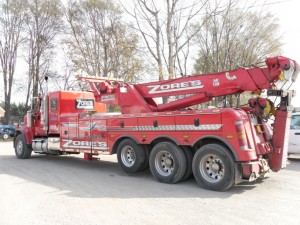Most of us have been through the gut-wrenching experience of a flat tire—usually when we’re already running late or in the middle of nowhere. The sudden wail of a tire going flat can be one of the most disheartening sounds for a driver, turning a routine drive into an unplanned roadside adventure. Despite the frustration it brings, knowing how to handle this fairly common incident can turn a potential disaster into a minor inconvenience. Here’s everything you need to know to prepare for, prevent, and handle flat tire emergencies.

Recognizing the Urgency of Flat Tire Emergencies
No one expects to get a flat tire, which is why it’s always so unexpected and inconvenient. The common causes range from punctures by nails, screws, or sharp objects, to hitting potholes, curbs, or fragments of metal on the road. Tires can also deflate due to slow leaks from damaged valves, bead leaks, or even due to extreme cold temperatures causing the air to contract.
You might not always hear or feel a flat tire, especially if it’s one of the rear tires that goes. Many modern vehicles have tire pressure monitoring systems (TPMS) that will alert you if one of your tires is low, but it’s always a good idea to periodically check your tire pressure manually, as well as check the condition of your tires to look for any physical damage, uneven wear, or foreign objects.
Steps to Changing a Flat Tire
1. Preparation and Location: The first step to changing a flat tire is ensuring you’re in a safe location. If you’re on a busy road, try to find a quiet and flat spot, preferably a parking lot or a wide shoulder. Engage your emergency brake, turn on your hazard lights, and if you have them, use your car’s wheel wedges to prevent your vehicle from rolling.
2. Locate Your Tools: Your vehicle should come with a jack, a lug wrench, and a spare tire. These are usually found in the trunk under the floor mat or in a compartment near the trunk’s opening. Familiarize yourself with where they’re stored before you need them.
3. Loosen the Lug Nuts: Before you jack the car up, it’s important to loosen the lug nuts on the affected tire. Do this while the car is on the ground, turning them counterclockwise until they begin to come loose (but do not remove them completely).
4. Jack Up the Car: Position the jack under the vehicle according to your car’s manual, usually where indicated along the car’s frame. Raise the car high enough for the flat tire to be off the ground. A wheel should typically not be lifted above 6 inches off the ground.
5. Remove the Lug Nuts and Old Tire: Once the car is jacked up, remove the lug nuts completely and pull the old tire off the wheelbase by gripping it with your hands on either side and giving it a firm pull. Place the lug nuts in a secure spot on the ground, so you don’t have to hunt for them when you’re putting the spare tire on.
6. Mount the Spare Tire: Put the spare tire on the wheelbase by lining up the holes over the lug nut posts. Push the tire on the rest of the way, and then thread the lug nuts back on. Tighten them as much as you can by hand.
7. Lower the Car and Tighten the Nuts: Lower the vehicle with the jack, all the way down to the ground. Then, use the wrench to securely tighten each of the lug nuts.
Safety Precautions to Bear in Mind
- Always perform these steps on a flat, hard surface.
- Try to keep all your gear clean and dry.
- Make sure no one is standing near the vehicle or behind the tires as you work.
- Never get under your car unless you’re sure it’s properly supported and stable, especially when you’re using the jack.
Benefits of Professional Service for Flat Tires
Roadside Assistance at Your Beck and Call
When handling flat tire emergencies feels out of your depth or you’re in a dangerous situation, a roadside assistance service can be a lifesaver. They’re able to get to you quickly, equipped with the tools to change a tire or repair a flat, and they’ll be able to do it safely and efficiently.
Cost Considerations
While not always free, many newer vehicles come with roadside assistance included as part of their warranty. Some insurance policies also have the option to add roadside assistance, often for a nominal fee.
Non-Tire Solutions
Another advantage of professional assistance for flat tire emergencies is the range of solutions they can offer. In some cases, depending on the type and location of the damage, they may be able to repair the tire on-site, saving you the cost and inconvenience of a tire replacement.
Preventing a Flat Tire Emergency Before it Happens
Regularly Scheduled Tire Maintenance
The best way to prevent a flat tire is by keeping them properly maintained. This includes regular rotation, balancing, and alignment, as well as maintaining the appropriate tire pressure and checking for any uneven or unusual wear patterns.
Steering Clear of Road Hazards
In many cases, especially with punctures, the cause of a flat tire is something that could have been avoided. Taking care to avoid driving over potholes, road debris, or any other hazards can dramatically reduce the likelihood of needing to change a tire unexpectedly.
Equipping Your Vehicle for Tire Trouble
The Must-Have Items in Your Car Emergency Kit:
- An adequately inflated spare tire that is in good condition
- A properly sized and functioning jack
- A lug wrench that fits your particular lug nuts
- A flashlight with extra batteries
- A reflective warning triangle
- Work gloves
- A poncho or raincoat
- A mat to kneel or sit on
- Tire pressure gauge
Optional Tools and Additions:
- A small tarp to provide a clean surface under truck, should conditions not allow for a clean area to work
- A small, portable air compressor
- A can of tire sealant to fill a leak and temporarily repair the tire enough for you to reach a service station or drive it to a professional for further repair or replacement
Regularly Checking Your Car Emergency Kit
Just as important as having the items in your car is making sure they are still there, in good working condition, and that you know how to use them. Routinely inspect your emergency kit during your car’s regular scheduled maintenance checks.
Closing Thoughts
Being prepared for a flat tire can take a lot of the stress out of an already stressful situation. By understanding what causes flat tires, knowing how to change one, and having the tools and knowledge to handle the situation, you can get back on the road safely and efficiently.
Part of being a responsible vehicle owner is preparing for the worst while aiming for the best. Cultivate a routine of checking your tire pressure, keeping an eye out for tire wear, and knowing where your emergency equipment is and how to use it.
In the end, the more you know and the better prepared you are, the less impact a flat tire will have on your day. Whether you’re learning how to change a tire for the first time or looking for tips on how to prevent them, investing in your knowledge of tire care will pay off in peace of mind and, often, a quick resolution to an inconvenient situation.
No matter how well-prepared you are, there will always be situations where professional help is the most appropriate. Contact Zore’s Towing for 24 hour roadside assistance and tow truck service in Indianapolis and its surrounding counties. We provide towing, recovery, equipment transport, car lockout service, flat tire service, jump starts, refueling, and more!
Related Posts:
The Vital Link Between Tire Inflation and Safe Driving
Top Alternatives to Having a Spare Tire
Why Did My Tire Blow?


